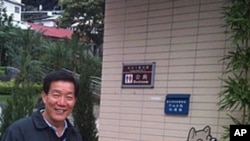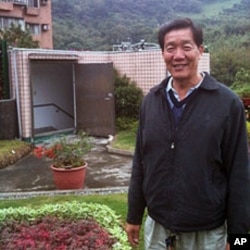In Taiwan, heavy industry fouls the water and air to make electronics for export. Citizens typically run the air-conditioning all year, throw out plastic utensils with daily boxed lunches and leave their cars idling at the curbside. But Taiwan’s government wants to make a better environmental name for itself by cutting its carbon dioxide emissions.
Chientan Borough, a cul-de-sac neighborhood of crowded Taipei, looks like a giant tropical garden. Unlike most of the densely populated Taiwanese capital of 2.6 million people, Chientan has planted trees instead of allowing new construction. Rainfall is collected for volunteer-run gardens growing ferns, palmettos and bananas. The neighborhood of 4,000 residents also gather fallen leaves for compost, and 40 children walk to school instead of getting rides.
This whole effort started with a decision to landscape the roof of a defunct kindergarten instead of kicking up dust to build a new one.
He says that, from here onward, the borough will become a village for birds and flowers, with walking promoted as the main means of transportation. Bi adds that the borough’s activities and ideas have inspired leaders in other Taiwanese cities and counties.
Chientan belongs to an elite group of 52 small residential pockets around Taiwan that were declared last year low-carbon villages after applying to the government. Officials picked them to lead the way in cutting emissions across the island. Each village has its own priorities, with some cutting back on electricity use or finding new ways to recycle.
The island, plagued by pollution from decades of manufacturing and dense urban development, aims to cut carbon dioxide emissions by 2020 to 2005 levels of 257 million metric tons, a 30 percent cut from projected business-as-usual levels by that year. Leu Horng-guang, superintendent of the low-carbon village program with Taiwan’s Environmental Protection Agency, worries about a lack of public support.
He says the low-carbon effort’s penetration rate is too low and that ordinary people generally do not care. He says borough leaders have led much of the effort so far, showing a passion and concern for their public image, but average citizens are indifferent as long as new measures do not cost them anything.
The EPA official concedes that every village-level cleanup measure is voluntary, making full compliance difficult. He says Taiwan’s electricity rates also remain low, giving consumers little practical incentive to cut back. The villages add up to only 0.64 percent of Taiwan’s population of 23 million.
Without a better environmental record, government officials fear that multinational companies will bypass Taiwan. Those firms may face pressure from eco-conscious consumers or their own corporate social responsibility statements to choose greener parts of Asia for factory sites. Taiwan’s rivals Japan and South Korea, which are also driven by manufacturing for export, have set carbon emissions targets similar to Taiwan’s.
Robin Winkler, co-convener of the Green Party Taiwan, says the low-carbon village effort stands out against similar programs, such as those in Europe, because of a strong government role in the process. But the American-born lawyer warns that Taiwan’s per-capita carbon footprint remains one of the world’s largest and that the village efforts may just create a false sense of progress.
"Unfortunately, at the same time the government is promoting these eco-villages or other measures, they continue to promote high-carbon, high-water, high-polluting industries [and] expansion of petrochemical plants," Winkler said. "They’re giving more permits for cement mines, all kinds of so-called science parks, and a high-polluting, high-carbon impact."
The EPA plans to expand low-carbon coverage to other parts of the island through 2020 in part by appealing to the corporate images of polluting manufacturers and, if needed, forcing polluters by law to make some hard changes. They hope that over the next eight years, the island will establish four massive low-carbon living areas encompassing the major cities.








